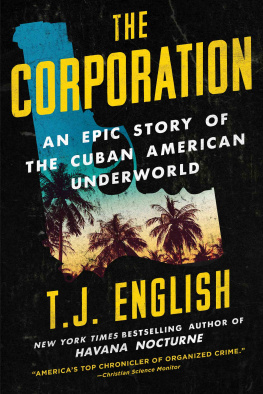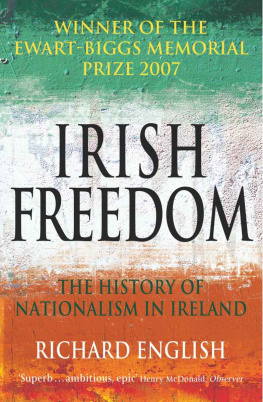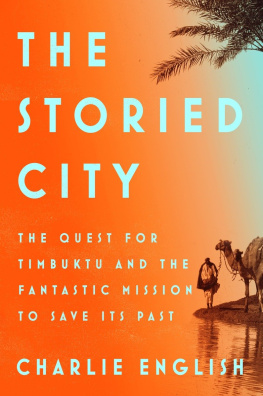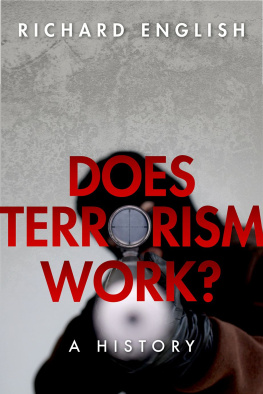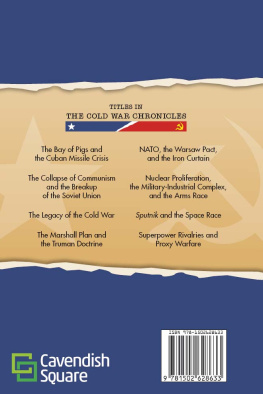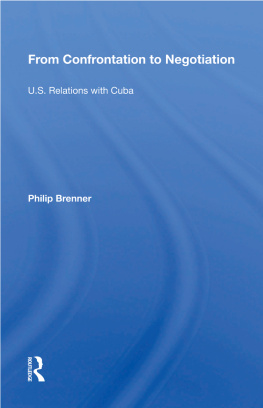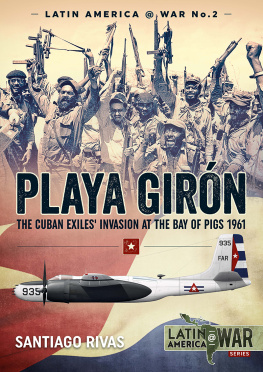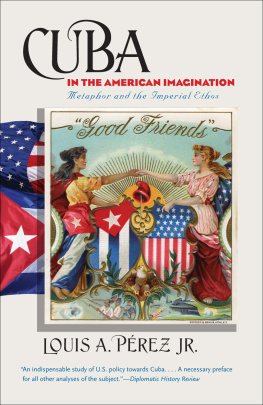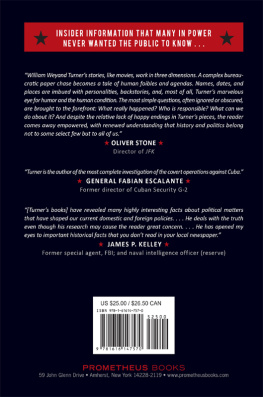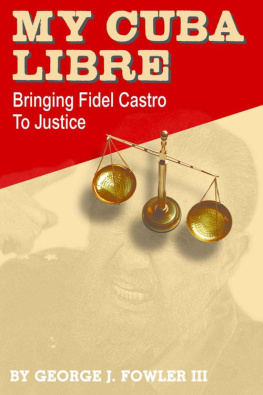Aquellos que van a retozar con los gatos deben esperar a ser rayado.
Those wholl cavort with cats must expect to be scratched.
IN THE UNITED STATES OF AMERICA, THE TRUE MELTING POT HAS BEEN ORGANIZED CRIME. The process of becoming American is rooted in gangsterism. If you start with the supposition that the country is by its very nature a criminal enterprisecolonized and taken by force from the indigenous population, then facilitated by an economic system of human enslavement that was eventually determined to be illegalyou get the picture. The seed was planted long ago. The Mob is merely the flowering of that seed, watered with the blood of the many thousands of gangland slaying victims from over the last century.
Traditional organized crimeIrish, Italian, Jewish, and morehas its roots in the early decades of the twentieth century. The Prohibition era gave rise to a criminal system by which gangsterism and politics would be inexorably linked, and the American underworld was institutionalized. Aspects of this history have been memorialized in movies, novels, and popular culture. For many citizens, the very idea of gangsterism is rooted in this historical narrative of getting ahead in the social universe, what we sometimes refer to as the pursuit of the American dream.
For Cuban Americans, this storyline is of a more recent vintage. Whereas the traditional Mob arose in the early decades of the previous century, the Cuban underworld in the United States was spawned by a revolution back home in La Patria, the Homeland, which took place in the 1950s.
The tumultuous legacy of the Cuban Revolution, as led by Fidel Castro, Ernesto Che Guevara, and many others, has been chronicled in innumerable books, documentaries, paintings, plays, movies, and personal histories. Like other historical events of great consequence, it has been interpreted and reconstituted through the prism of political ideology, iconography, legend, and fantasy so that the lessons to be learned are fungible, depending on your point of view. Castro is a hero; Castro is the devil. The revolution was for the people, or it was done to centralize the power of the government, so that Castro could never be challenged.
One indisputable and rarely discussed point is that many men and women who contributed to the revolution, including some who fought alongside Castro and his 26th of July Movement, did not knownor would it have been their intention had they knownthat they were taking part in a communist takeover. Castro was scrupulous in not declaring the political movement of which he was a part to be a Marxist-Leninist enterprise. When he traveled to the United States in 195556 and gave speeches designed to raise money for his cause, he kept his cards close to his chest. It was only after the revolution was successful that Castro and Guevara made their designs clear.
Some prominent members of the revolution, including rebel fighters who had distinguished themselves on the battlefield, and also some leading minds of the underground resistance, expressed their dismay with the direction of the new revolutionary government. When it became clear that the Castro regime was to be a communist dictatorship, with no legitimate elections, people began to flee. Supporters of the deposed dictator, El Presidente Fulgencio Batista, were, for obvious reasons, among the first to abandon ship. Those who didnt escape were rounded up; some were put up against a wall and executed by firing squad. (Paredn!To the wall!) The next to flee were the upper classes, which had seen their property and businesses seized by government decree. And then came the tens of thousands of others, common folkteachers, professionals, artists, and the dispossessedwho fled the island any way they could, by plane and by boat, and, in later years, by raft, inflated inner tubes, and other flimsy, jerry-rigged vessels, some of which succumbed to the stormy realities of an unforgiving sea, resulting in death.
For those who fled, especially those who had originally been supportive of the revolution, the dominant mood was one of resentment along with a deep sense of betrayal. Where there are feelings of betrayal, there is often a need for revenge. This was a concept that flowed like ectoplasm through the veins of a newly vanquished people
They settled mostly in South Florida, primarily the city of Miami, which was 228 miles across the Florida Strait from Havana, a short forty-five-minute flight for those with the means and rarefied diplomatic status to make the journey. A number of Cubans continued north and settled in Hudson County, New Jersey, mostly in the town of Union City, which by the late 1960s would have the largest population of Cuban migrs outside of Miami. There, they found work in the garment factories that had served as the areas main source of employment since the postWorld War II years, when the town was populated mostly by citizens of Italian, Irish, and Jewish extraction.
Both in New Jersey and in South Floridain fact, anywhere that Cubans settledthey brought their cultural traditions. Brilliant Afro-Cuban music; vibrant dance clubs; a devotion to Catholicism and also, in some cases, the pagan religion of Santera; cigars nonpareil; occasional cockfighting; the preeminence of family life; a diet heavy on chicken, lchon (suckling pig), plantains, and rice and beans; a taste for rum from the islands; and, for some, an affinity for games of chance, most notably a simple game known to all Latinos as la bolita.
Literally, the word bolita means little ball. The designation stems from a time when the national lottery in Cuba was determined by small numbered balls being thrown into a bag, mixed up, and then randomly withdrawn to determine the daily number. Bolita, the illegal underground numbers game, was known as the poor mans lottery. The winning number was based on the Cuban national lottery; it was cheaper, so you could play for less and win more money. From the 1920s onward, it became something of a national passion in Cuba, as common as sugarcane fields, royal palms, and the distant, ever-present drumbeat of revolution.
Given the ubiquitous presence of bolita among Cubans of all classes and genders, it was perhaps inevitable that the game would thrive in the Cuban exile communities of Miami and Union City. And so it was. The man whose name would come to be associated with this illegal activity in the United States had not been a seasoned bolitero, or bolita boss, back in Cuba. He had been a cop in the city of Havana during the reign of the Batista dictatorship. His name was Jos Miguel Battle y Vargas.
HAVANA IN THE 1950S WAS A ROLLICKING CITY OF CORRUPTION AND GOOD TIMES. Some would remember it as one of the most glorious localities for sensuality and vice in the entire twentieth century. Partly this had to do with the Caribbeans historical precedent as a crossroads for black market commerce and profiteering since the days of spice traders, international mercenaries, pirates, and buccaneers. Havana would eventually become a city unlike any other in the regiona sophisticated Latin American center of culture and grand architecturebut the city would forever maintain its sultry, sexually oriented underbelly as a draw for tourists and celebrities from around the globe.
Meyer Lansky, Charles Lucky Luciano, and Santo Trafficante Jr. were among the prominent mafiosi in the United States who had always recognized Cuba as the ideal location for an offshore base of operations. It also had great value as a moneymaking proposition by itself. Lansky was the first to establish a relationship with Fulgencio Batista, who in 1952 appointed the mobster as Cubas director of gambling reform. Lansky cleaned up the islands bad reputation for rigged casino gambling. This would lead to an expansion in the gaming and entertainment industry in Cuba unlike anything seen before.

